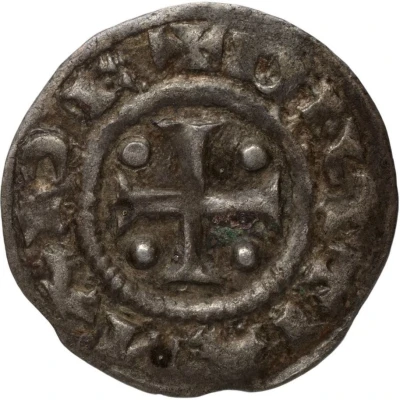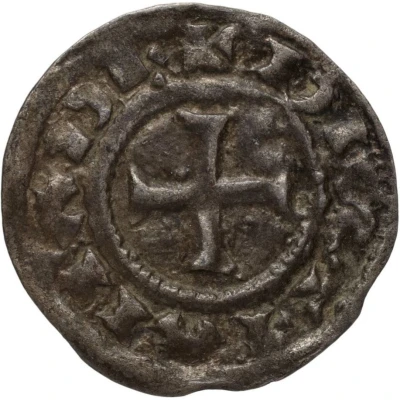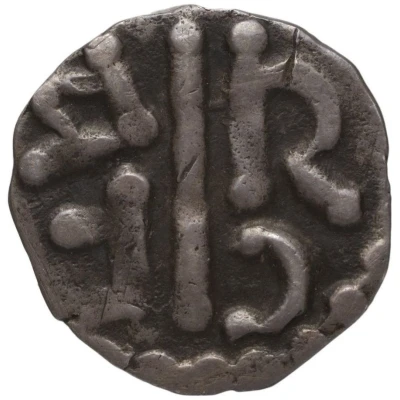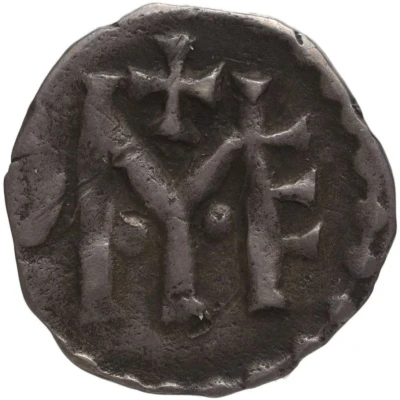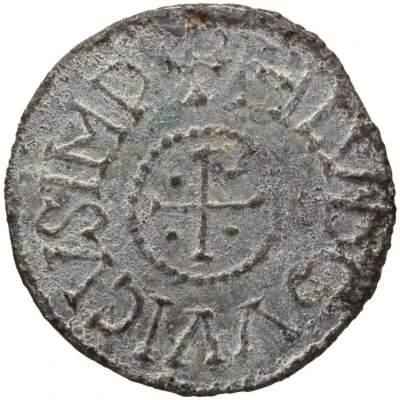
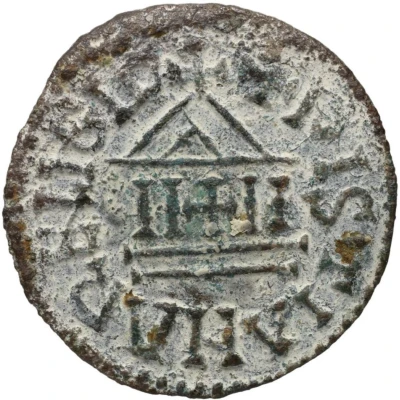

© Bibliothèque nationale de France / Gallica
Obol - Louis I christian legend
| Silver | 0.86 g | 16 mm |
| Issuer | Unified Carolingian Empire |
|---|---|
| Emperor | Louis the Pious (Hludovicus) (814-840) |
| Type | Standard circulation coin |
| Years | 823-840 |
| Value | 1 Obol (1⁄480) |
| Currency | Pound (751-843) |
| Composition | Silver |
| Weight | 0.86 g |
| Diameter | 16 mm |
| Shape | Round (irregular) |
| Technique | Hammered |
| Orientation | Variable alignment ↺ |
| Demonetized | Yes |
| Updated | 2024-10-09 |
| Numista | N#156440 |
|---|---|
| Rarity index | 92% |
Reverse
Temple with four columns on two steps surmounted by a cross, in the center of the temple a cross.
Script: Latin
Lettering: XPISTIANA RELIGIO
Translation: Christian religion.
Comment
There are many spelling varieties of the reverse legend.Interesting fact
One interesting fact about the Obol coin is that it was used as a form of currency during the Unified Carolingian Empire, which was a short-lived empire that existed from 813 to 843 AD. Despite its brief existence, the empire played a significant role in shaping the political and cultural landscape of Europe during the Middle Ages. The Obol coin, made of silver and weighing 0.86 grams, was a standard circulation coin during this time and was used for everyday transactions. Its design featured an image of Louis I, also known as Louis the Pious, who was the Emperor of the Unified Carolingian Empire from 813 to 840 AD. The coin's design and the fact that it was made of silver reflect the influence of Christianity and the Carolingian dynasty's emphasis on the importance of trade and commerce during this period.
Price
| Date | Mintage | VG | F | VF | XF | AU | UNC |
|---|---|---|---|---|---|---|---|
| ND (823-840) | - | - | - | - | - | - |
Values in the table are based on evaluations by sales realized on Internet platforms. They serve as an indication only for Obol - Louis I (christian legend) (823-840) coin.
